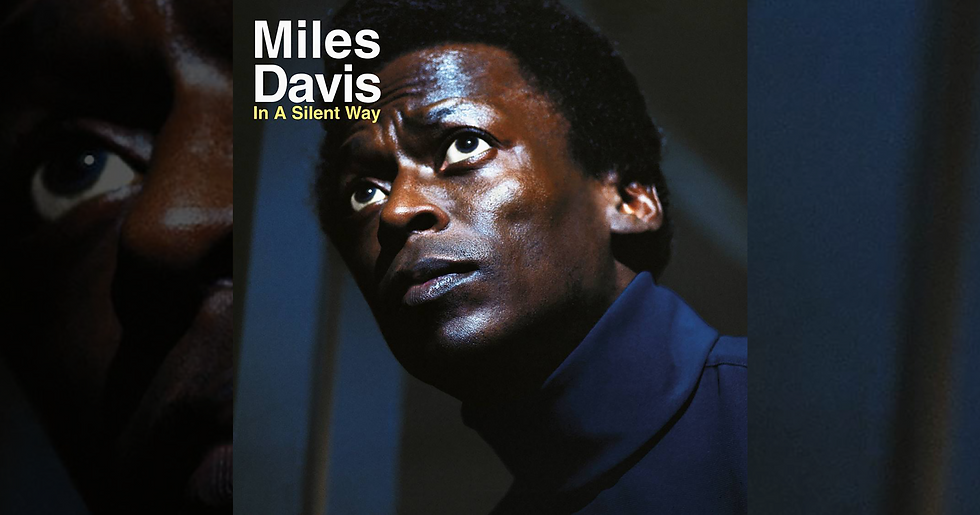Ella & Louis: A Timeless Jazz Duet that Redefines Musical Chemistry
- Victor Stranges

- Feb 19
- 4 min read
Born in 1917, Ella Fitzgerald's early life was marked by hardship. Orphaned at the age of fifteen, she was sent to a reformatory in New York before finding her way to the streets, her remarkable vocal talent offering a lifeline. Louis Armstrong, a few years Fitzgerald’s senior, grew up in equally challenging circumstances.
At the tender age of twelve, he was arrested for firing a gun into the air in celebration of New Year's Eve, an event that led to his confinement at the New Orleans Colored Waifs’ Home. These tumultuous beginnings, marked by personal struggle, would ultimately shape two of the most extraordinary careers in the history of jazz, both of which would leave an indelible mark on the genre.
In 1956, Fitzgerald and Armstrong, two of the most iconic figures in jazz, came together for Ella And Louis, their inaugural collaborative album. Backed by a stellar ensemble including pianist Oscar Peterson, guitarist Herb Ellis, bassist Ray Brown, and drummer Buddy Rich, this record was recorded at Capitol Studios in Los Angeles and would be the first in a trilogy of works, followed by Ella And Louis Again and Porgy and Bess on the Verve label.
Photo by William P. Gottlieb, ca. September 1947, Public domain

The album opens with the lilting, wistful 'Can't We Be Friends?' setting a tone of elegance and restraint that persists throughout the record. Its approach is not hurried but rather languid, allowing each note and phrase to breathe with the grace of a love letter. The pair’s voices, so distinct yet so complementary, weave together in a delicate dance. Armstrong’s raspy gravel contrasts beautifully with Fitzgerald's smooth, silken tone, creating a tender yet playful dynamic that highlights their intuitive musical rapport. Each track on the album carries with it a sense of unhurried intimacy, punctuated by the intimacy of the material itself. Irving Berlin’s 'Isn’t This A Lovely Day?' echoes the joy of romance, while the other classics—'Moonlight in Vermont,' 'They Can't Take That Away From Me,' 'Cheek to Cheek,' and 'April in Paris'—offer a radiant view of love’s more enduring aspects.
What makes Ella And Louis so compelling is its remarkable balance between melodic sweetness and rhythmic sophistication. The rhythm section, with its masterful use of brushes and subtle inflections, provides a backdrop that is as much about space as it is about sound. The musicians play with an understated elegance, focusing not on virtuosic display but on creating an atmosphere that allows the vocals to take center stage. It’s jazz stripped down to its essence—each note measured, yet overflowing with emotion. The recording brims with joy but never seems rushed or crowded. There is a sense of restraint that never feels like restraint, and in that careful balancing act, the album uncovers a depth of intimacy that might otherwise go unnoticed.
Buy Wonderful World:
The Best Of Louis Armstrong
As an Amazon Associate, we earn from qualifying purchases. This does not affect your price.
Photo by Associated Booking Corp., 1956, Public domain

Armstrong’s contribution to the album is much more than his trumpet playing, which is superb in its own right. His vocal delivery, though often overshadowed by Fitzgerald's brilliance, is equally commanding. His voice, at times gravelly and rough, contrasts beautifully with Fitzgerald’s smooth phrasing, but it is also full of nuance and warmth. Armstrong’s subtle harmonies and scatted vocal runs are an integral part of the album's charm, grounding it with his unmistakable presence. His willingness to explore the far reaches of his vocal range—grumbling, moaning, and playing with sounds that most singers would consider a step too far—gives the album its quirky, irreverent character, underscoring the duo’s deep mutual respect.
Norman Granz, the producer behind the album, was a master of creating environments in which his artists could flourish. His approach was unorthodox but effective: “When I recorded Ella,” Granz once remarked, “I always put her out front, not a blend. The reason was that I frankly didn’t care about what happened to the music. It was there to support her. I’ve had conductors tell me that in bar 23 the trumpet player hit the wrong note. Well, I don’t care. I wasn’t making perfect records. If they came out perfectly, fine. But I wanted to make records in which Ella sounded best.” (Norman Granz: The Man Who Used Jazz to End Racism, 2013). Granz’s philosophy is apparent throughout Ella And Louis, as the music surrounds Fitzgerald, allowing her to shine in all her glory while letting Armstrong and the band contribute to the spirit of the recording without overshadowing the vocal performance.
Photo: Norman Granz, ca. May 1947, by William P. Gottlieb. Public domain.

The brilliance of Ella And Louis lies in its understated beauty. It is not just a meeting of two jazz greats but a union of voices—both literal and metaphorical—each adding layers of meaning to the songs they perform. Their chemistry is palpable, and there’s an undeniable joy in the way they interact, their voices blending and twisting through the melodies with a natural ease. It is the sound of two musicians utterly comfortable in each other's company, creating something greater than the sum of its parts. And while Ella And Louis may be a record about love, it is also an album that speaks to a deeper, more universal connection—one that transcends musical genres and resonates in the heart of anyone who listens.
Ella And Louis remains a touchstone in the jazz canon, a masterclass in vocal collaboration that captures not only the technical artistry of its performers but the spirit of joy and camaraderie that made their partnership so special.
Buy Ella & Louis:
Ella Fitzgerald & Louis Armstrong
As an Amazon Associate, we earn from qualifying purchases. This does not affect your price.











